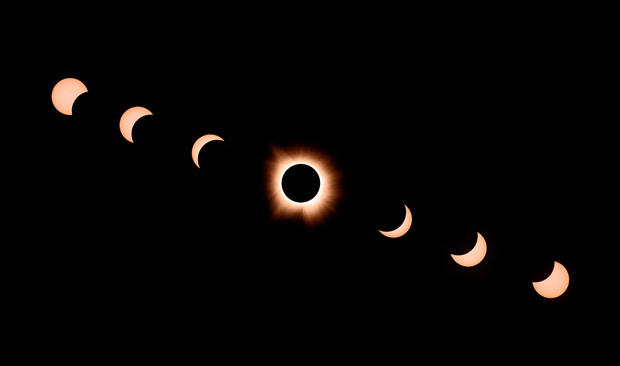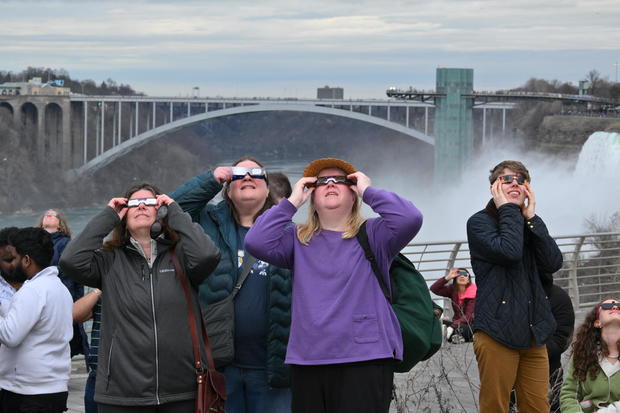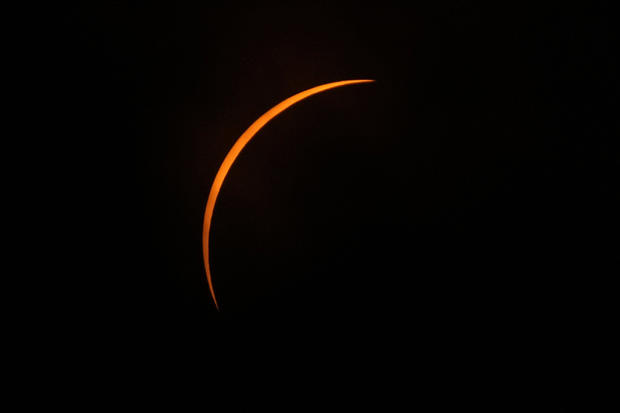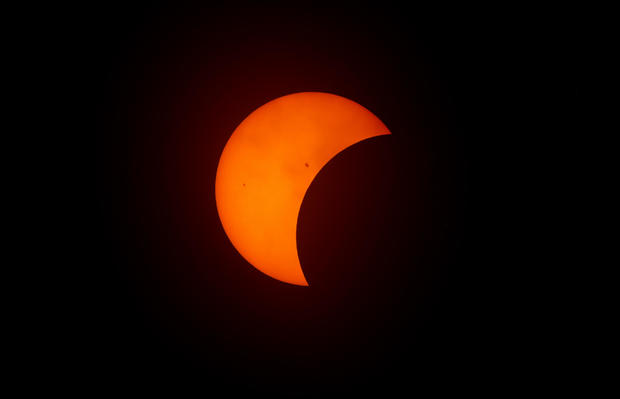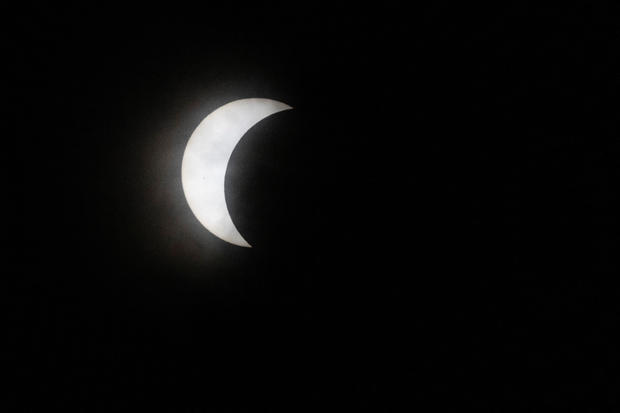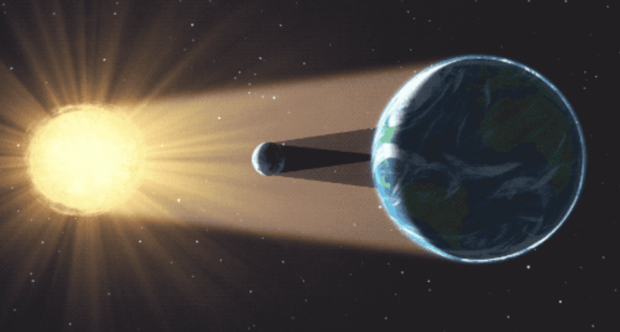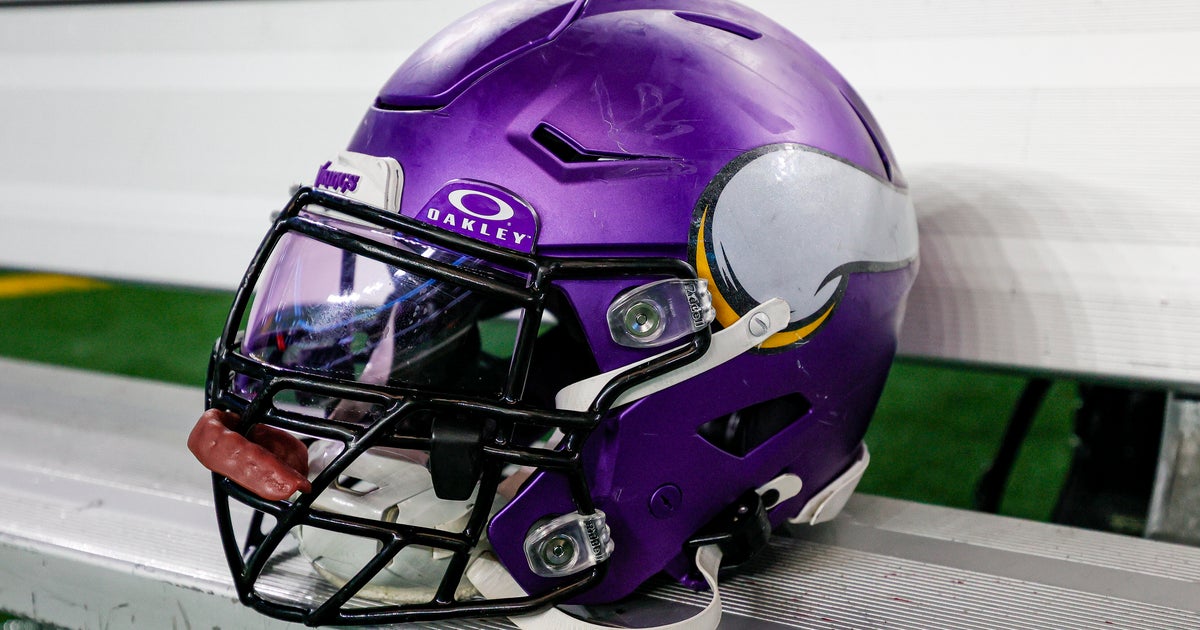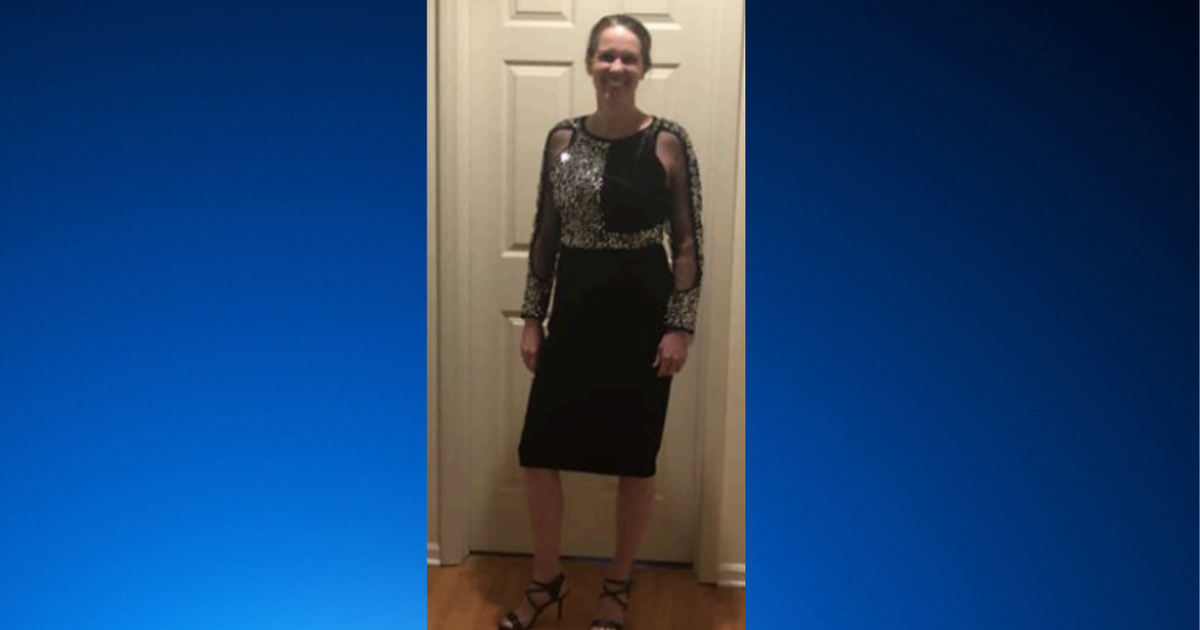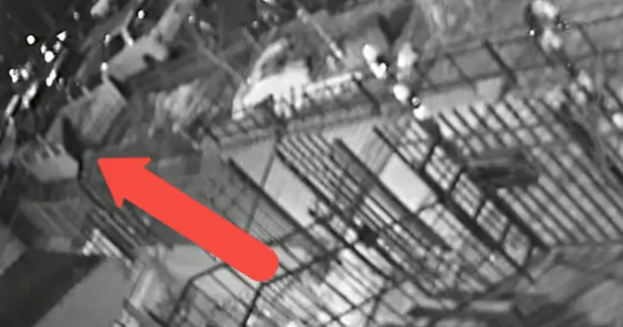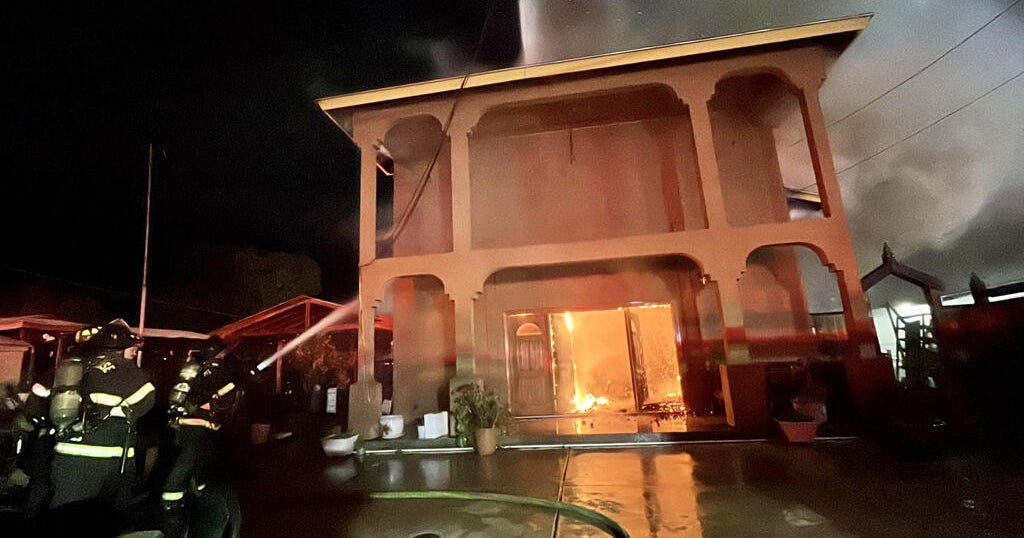Missed the 2024 total solar eclipse? Watch video of moments from the event here.
The sky darkened for millions in the U.S. on Monday as the 2024 total solar eclipse worked its way across a swath of the country.
A solar eclipse happens when the moon passes between the Earth and the sun, casting a shadow that blocks out the light from the sun. The sun appeared to vanish behind the moon for minutes at a time as the eclipse traveled along its "path of totality," starting on Mexico's Pacific coast and moving northeast through more than a dozen states, from Texas to Maine, and into eastern Canada.
More than 31 million people live along the path of totality, and many more flew or drove to witness the April 8 spectacle in person. Outside the path of totality, the rest of the continental U.S. got to see a partial eclipse (if skies were clear) as the moon blocked a portion of the sun. It will be decades before the next total solar eclipse appears in the U.S.
High school students help NASA collect data during eclipse
"It was totally worth it. It was amazing."
In Erie, Pennsylvania, people gathered to watch the total solar eclipse and broke out in applause as they plunged into darkness. Emotions took over as everyone fixated on the ring in the sky. There was a lot of awe, disbelief and strained necks as people looked up for four minutes straight.
One family drove eight hours from Virginia.
"I honestly was not that excited about it. I was like, eight hours for three minutes? But it was totally worth it. It was amazing," one family member said.
-Meghan Schiller and Christopher DeRose
Watch: Cleveland witnesses solar eclipse totality
What other celestial events can you see in 2024?
Stargazers have more events to look forward to this year following the April 8 eclipse.
There are several meteor showers ahead, including the Lyrid meteor shower later this month, expected to peak April 21-22. There's also the Eta Aquariids, peaking May 4-5; the Perseids, peaking Aug. 12-13; and the Geminids, peaking Dec. 13-14.
Outside of the U.S., an annular solar eclipse will be visible in South America on Oct. 2.
Watch: Eclipse reaches totality over Arkansas and Illinois
Look at the solar eclipse too long? Doctors explain signs of eye damage.
Did you look up at the solar eclipse without your safety glasses? Looking at the sun — even when it's partially covered like during the eclipse on April 8 — can cause eye damage.
There is no safe dose of solar ultraviolet rays or infrared radiation, said Dr. Yehia Hashad, an ophthalmologist, retinal specialist and the chief medical officer at eye health company Bausch + Lomb.
"A very small dose could cause harm to some people," he said. "That's why we say the partial eclipse could also be damaging. And that's why we protect our eyes with the partial as well as with the full sun."
But how do you know if you've hurt your vision? We asked eye doctors what to know. Read more here.
Watch: Total solar eclipse seen in Indianapolis
When is the next eclipse?
After the April 8 total solar eclipse, the next total solar eclipse that will be visible from the contiguous United States will be on Aug. 23, 2044.
Before that, there will be an annular solar eclipse on Oct. 2 of this year, according to NASA. It will be visible in parts of South America, with some parts only able to experience a partial eclipse. A partial eclipse will also be visible in parts of Antarctica, the Pacific Ocean, the Atlantic Ocean and North America.
There will be two partial solar eclipses next year, according to NASA. On March 29, 2025, a partial eclipse will be visible in parts of Europe, Asia, Africa, North America, South America, the Atlantic Ocean and the Arctic Ocean. On Sept. 21, 2025, there will be a partial eclipse in parts of Australia, Antarctica, the Pacific Ocean and the Atlantic Ocean.
There will also be two solar eclipses in 2026, including a total solar eclipse. On Feb. 17 of that year, there will be an annular solar eclipse visible in parts of Antarctica, according to NASA. A partial eclipse will be visible that day in parts of Antarctica, Africa, South America, the Pacific Ocean, the Atlantic Ocean and the Indian Ocean.
On Aug. 12, 2026, there will be a total solar eclipse visible in parts of Greenland, Iceland, Spain, Russia and a small area of Portugal, according to NASA. A partial eclipse will be visible in parts of Europe, Africa, North America, the Atlantic Ocean, the Arctic Ocean and the Pacific Ocean.
Watch: Total solar eclipse in Dallas, Texas
Total eclipse puts on a brilliant show over western New York
Mid-afternoon daylight turned to dusk in seconds, and for a time even darker than that, over Niagara Falls as the moon directly blocked the sun for about three and a half minutes of totality. The temperature dropped as the sky darkened, with just a sliver of the sun's outer rim glowing and clearly visible before the eclipse shifted back to partial again.
NASA debunks eclipse radiation myths
NASA said that over the years, people scared of eclipses have made up stories about the harm they can pose.
Several myths revolve around radiation. For instance, there's a false idea that radiation during a total solar eclipse will poison any food prepared during the eclipse.
Another common myth around the eclipse is the idea that the total solar eclipse produces harmful rays that can cause blindness, according to NASA. The space agency says that when the moon covers the sun during the eclipse, the corona emits electromagnetic radiation. That light is a million times fainter than the light of the sun itself and coronal light cannot cross 150 million kilometers of space, penetrate Earth's dense atmosphere and cause blindness.
Still, it's not safe to look at the solar eclipse without special glasses. Watching the sun during the eclipse before or after totality can cause retinal damage.
People also falsely believe that pregnant individuals should not watch an eclipse. NASA says it's related to the false idea that harmful radiation is emitted during a total solar eclipse.
Will animals be affected by the solar eclipse?
Because total solar eclipses happen so infrequently, animal experts aren't sure how they'll be impacted as the skies darken. In 2017, giraffes ran in circles, flamingos huddled together and rhinos looked confused at the Nashville Zoo, the Associated Press reported. Researchers prepared to study the eclipse's impact on animal behavior at the Fort Worth Zoo in Texas.
Veterinarians say pet owners may notice brief periods of confusion and fear among dogs and cats during the eclipse. Some pets may start their nighttime routine earlier as the sky darkens for the eclipse, yawning and heading for their beds.
Some animals that depend more on the light-dark cycle, like birds, may be more affected because the sky will darken during the eclipse, said Dr. Katie Krebs, a veterinarian and professor at University of Pennsylvania's School of Veterinary Medicine.
Eclipse arrives in Niagara Falls and Buffalo, New York
A crescent-shaped sun shone bright white as the moon began to cover it and transition into totality over Niagara Falls at around 2:45 p.m. EDT. Sudden bursts of cheering rang out from the growing sea of viewers donning eclipse glasses and tilting cameras upward at the ready, as the partial eclipse peeked through dark clouds in fleeting intervals.
Officials had in the weeks leading up to the eclipse said that Buffalo and its surrounding area, which includes the U.S. side of Niagara Falls, was preparing to host an estimated 1 million tourists for the celestial show.
But crowds were thin across the city, save for those that gathered in droves at the scenic state park, where some visitors said they had come as early as dawn to secure their spot and where New York Gov. Kathy Hochul joined hopeful skywatchers as the eclipse approached totality over the region.
How long will the solar eclipse last?
Viewers at a spot along the path of totality will see a total eclipse lasting up to about 4 and a half minutes, with the length of time the sun is at least partially obscured lasting about 40 minutes.
The eclipse's path across the U.S. will dazzle viewers for about 3 and a half hours — from the time the eclipse comes into view along the U.S.-Mexico border near Eagle Pass, Texas, at 12:10 p.m. CT, until it exits into Canada from northern Maine at about 4:40 p.m. ET.
From the time the partial eclipse first appears on Earth over the Pacific to its final glimpses before disappearing thousands of miles away, the entire celestial show will last about 5 hours, according to timeanddate.com.
Illinois town in the path of totality hosts thousands of eclipse watchers
Southern Illinois expected about 200,000 people to pour in from all over to be in the path of totality for the solar eclipse. The city of Carbondale welcomed them with a block party featuring bands, food and drink on Sunday evening once the rain moved out.
Carbondale was also in the path of the 2017 total eclipse.
"Everybody talks about it being a miracle," said Scott Mitchner. "It is kind of a miracle. And it's a very amazing thing to see. And that first time, I know I'll never forget that. And I'm looking forward to a second time."
Getting married during the eclipse
As the total solar eclipse moves reaches Russellville, Arkansas, more than 300 couples will weave their future together at a mass wedding. There, the total eclipse will last 4 minutes and 12 seconds, with totality occurring at 1:50 p.m. CT.
Rodney Williams, a hot air balloonist from Branson, Missouri, is used to turning the skies into attractions. He organized the event as part of the city's "Total Eclipse of the Heart" festival.
The event offers marrying couples cake, a non-alcoholic toast and music — for free.
"Sometimes planning a wedding can be stressful," Williams said. "Not only the money but just all the decision-making and all of the different ideas that may not all coincide with each other."
Craig Wayne Boyd, a winner of "The Voice" singing contest, will officiate the ceremony and more than 600 newlyweds will have their first dance as he sings "Golden."
Stunning photos of eclipse from Mexico and Texas
The total solar eclipse first made landfall along Mexico's Pacific coast before moving on to Texas, and photographers in both locations captured breathtaking images as the moon began to cover the sun.
Biden: "Enjoy the eclipse. But play it safe."
The White House posted a short video of President Biden donning his eclipse glasses and encouraging Americans to enjoy the view. "But don't be silly, folks – play it safe and wear protective eyewear," the message said.
Though Mr. Biden didn't mention it, his video prompted comparisons to a famous photo of then-President Trump standing on the same White House balcony during the 2017 eclipse and briefly looking up without protective glasses.
Doctors say eclipse glasses are crucial to protect your eyes from sun damage.
Check your eclipse glasses: Illinois Health Department warning of recall
The Illinois Department of Public Health is warning people to check their eclipse glasses after a recall.
The recalled glasses were sold through Amazon as "Biniki Solar Eclipse Glasses AAS Approved 2024 – CE & ISO Certified Safe Shades for Direct Sun Viewing (6 Packs)."
The recalled glasses are labeled as "EN ISO 12312-1:2022." Proper eclipse safety glasses should carry the ISO designation of 12312-2.
However, the glasses were not listed on Amazon's official recall page and were still available for sale on Monday. A spokesperson said that the glasses had previously been identified as not being sourced from a supplier approved by the American Astronomical Society, and any customers who had purchased them were notified and provided refunds.
Since then, those glasses have been added to the American Astronomical Society's approved list, and remain available for purchase.
How to safely watch the total solar eclipse
Millions of people across the U.S. are excited to see the eclipse, but it's important to do so safely. Looking at the sun — even when it's partially covered like during an eclipse — can cause eye damage.
There is no safe dose of solar ultraviolet rays or infrared radiation, says Dr. Yehia Hashad, an ophthalmologist, retinal specialist and the chief medical officer at eye health company Bausch + Lomb.
Special glasses are needed for protection during eclipse viewing; regular sunglasses aren't enough, even if you stack more than one pair. A pinhole viewer is another safe viewing option.
Eye problems caused by looking at the eclipse without special glasses may not be apparent immediately, sometimes appearing one to a few days following the event. It could affect just one or both eyes. And while some will regain normal visual function, sometimes the damage is permanent.
What time will the eclipse reach peak totality?
Peak viewing time will depend on your location. The total solar eclipse will emerge over the South Pacific Ocean on Monday morning before reaching North America at about 10:57 a.m. PT, beginning in parts of Mexico.
The path of totality — where onlookers can witness the moon fully blocking the sun (through eclipse viewing glasses for safety, of course) — then crosses over the U.S.-Mexico border into Texas, arriving at Eagle Pass at 12:10 p.m. CT.
It completes its journey across the U.S. at about 4:40 p.m. ET, passing over Caribou, Maine, and into Canada.
Here is a look at the expected times in 13 cities along the path of totality:
What are the different types of solar eclipses?
While the April 8 eclipse will be a total solar eclipse, there are actually several types of solar eclipses. They occur when the moon passes between the sun and Earth, casting a shadow on Earth, either partially or totally blocking the sun's light along its path..
During the April 8 total solar eclipse, the moon will completely block the light of the sun across parts of the U.S., allowing people in the "path of totality" — the center of the moon's shadow — to experience a total eclipse.
The sun will have a crescent shape as the moon begins to cover it, then the sky will get dimmer as the moon covers more and more of the sun, until it eventually covers the full sun during several minutes of totality. During totality, viewers may see a corona, the outermost part of the sun's atmosphere.
An annular solar eclipse happens when the moon passes between the sun and Earth when it is either at or near its farthest point from Earth, according to NASA. With the moon so far away, it won't completely cover the sun. During this type of eclipse, the moon will appear as a dark disk on top of the sun, with a bright ring around it.
A partial solar eclipse happens when the sun, moon and Earth are not perfectly aligned as the moon passes between the sun and Earth, NASA explains. Only part of the sun is covered by the moon during this type of eclipse, giving it a crescent shape.
How many people live in the path of the eclipse?
An estimated 31.6 million people live in the path of totality for the April 8 eclipse. An additional 150 million people are within 200 miles of the path of totality, according to NASA, and millions more will be able to see a partial eclipse.
That's more than were in the path of the last one to cross the U.S., in 2017.
"This eclipse, in particular, is I think set to be even more spectacular," astronomer Lucianne Walkowicz told CBS Chicago.
"Totality will actually last almost a full two minutes longer in some places" compared to last time, she said.
Will the weather be clear for eclipse viewing today?
Cloud cover and storms may interfere with eclipse viewing in Texas, where volatile weather is expected. For Dallas and Austin, "it's a tough go," says CBS New York weathercaster Lonnie Quinn, while San Antonio will have "some of the worst weather of all."
But farther north and east, better conditions are expected, giving many in the Midwest and Northeast a good chance to see the eclipse. Some clouds may move in and out over Missouri, Indiana and into western New York, says The Weather Channel meteorologist Jim Cantore.
Quinn has more details on the forecast in the video below.
How to know if your eclipse glasses are safe
The only glasses that should be used to look at a partially eclipsed sun are eclipse glasses that meet an international standard, ISO 12312-2, according to the American Optometric Association.
Don't use sunglasses, smoked glass, an unfiltered telescope and magnifiers or polarized filters as a way to view the eclipse. Looking at an eclipse without proper protection can cause eye damage.
Real eclipse glasses will have a notation about the international standard somewhere on their body, to verify that they reduce visible sunlight to a safe level, and block ultraviolet and infrared radiation.
Before buying, make sure the glasses are advertised as meeting this standard. And beware, there are many fakes on the market.
How to make solar eclipse glasses, cereal box viewers and pinhole projectors to watch the eclipse safely
While solar eclipse glasses are available for sale, there are several safe alternatives you can make or find at home to help you enjoy the eclipse, experts say.
If you have access, you can use No. 14 welder's glasses or aluminized mylar plastic sheets. You can also make a homemade pinhole projector using a piece of paper or create an eclipse viewer from a cereal box. Here are instructions.
Eye protection during the eclipse is important to prevent eye damage. Don't use normal sunglasses — they do not offer enough protection.
